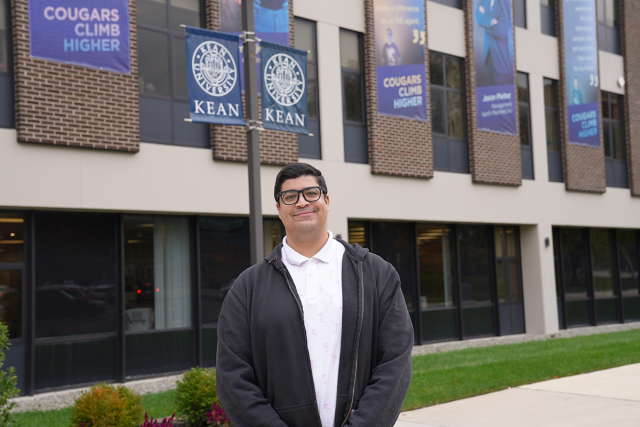Q&A: Student Researcher – Gabriel Serrano

Gabriel Serrano is a senior computer science major in The Dorothy and George Hennings College of Science, Mathematics and Technology at Kean University. Serrano, who is from Springfield, is mentored by Kean Assistant Professor Daehan Kwak, Ph.D. His basic area of research is Artificial Intelligence (AI)/machine learning.
What is innovative about your research?
The most innovative thing about my research would be the application of AI to assist people struggling with their mental health. While research exists for this topic, I believe the approach I am taking with the Emotional Support AI research is unique in nature and has the potential to assist many individuals struggling with their mental health once fully implemented.
What has been your role so far in developing research ideas and carrying them forward?
My role in developing research ideas and carrying them forward has been primarily to expand on existing ideas, except for the Emotional Support AI. The Summarization Electronic Health Records via Large Language Models project I am working on is a continuation of existing research which takes a different approach to summarization. On the other hand, the Sign Language Recognition AI project started off as a group project, which I later wanted to restart and work to improve on my own time. I primarily worked independently to investigate different approaches to research problems, and then met with my research advisor, Dr. Kwak, and other students to bounce ideas off one another and discuss progress.
What do you think are your most significant research accomplishments?
For the sign language recognition project, I won 3rd place in the ACM/CMD-iT Tapia Student Research Competition (undergraduate). For the Summarizing Electronic Health Records via Large Language Models project, I received 2nd place in the GMiS Undergraduate CAHSI Student research poster competition.
What has been the impact of your research?
Currently, I am working on turning my Emotional Support AI research into a fully functioning website so that people around the world can utilize the tool for support as needed.
Does your research have potential to serve the wider community?
Each of my research projects has the potential to serve the wider community if fully implemented. Emotional Support AI is a great tool for receiving emotional support, advice and logging your thoughts for future reference. I also believe that the Sign Language Recognition AI would be a great learning tool when fully implemented and would help individuals communicate without being fluent in sign language. Lastly, the Summarizing Electronic Health Records via Large Language Models research has the potential to improve the quality of patient care by decreasing the time it takes for providers to read through lengthy electronic health records.
What challenges do you face in your research area?
My current research areas are utilizing AI for health care and accessibility purposes. Because of the privacy concerns associated with these research areas, the biggest issue seems to also be collecting data. It is hard to obtain real health records (even if anonymous) due to HIPAA laws. This was also an issue with the sign language recognition project I am working on. In this scenario, I can manually create the data I need, but this causes the model to be biased towards my signs and gestures.
How do you balance your time handling research and class work?
Balancing my time has been a very difficult task throughout my Kean career. In my first two years, I had to work part-time while attending my classes to ensure that my bills were getting paid. In my junior year, I received the NSF S-STEM scholarship and was able to utilize the funds in a way that enabled me to focus more on school rather than spending most of my time working.
Describe a research problem you have faced. What did you learn?
One research problem I faced was not having enough computing resources to accomplish a task. At the time, I was trying to apply a patch to a large language model which would allow me to input larger amounts of text. However, this task had very large memory requirements, and I was unable to run the code to do so. I had to learn how to use different tools such as Google Colab to run the code in the meantime. However, later I was able to borrow a powerful computer from the department to run the code as needed.
What are your professional goals in the next five to 10 years?
In the next five years, my goal is to have secured a full-time software engineering role and be promoted at least once within the company I am working for. Within 10 years, my goals would be to become a senior software engineer at a reputable company and be making at least $200,000 annually.
How will conducting research at Kean help you achieve your long-term career goals?
Being given the opportunity to do research at Kean has granted me opportunities to network and attend various conferences. I believe that this will continue to assist me in achieving my long-term career plans by providing me with a safe space to explore and learn about new technologies.